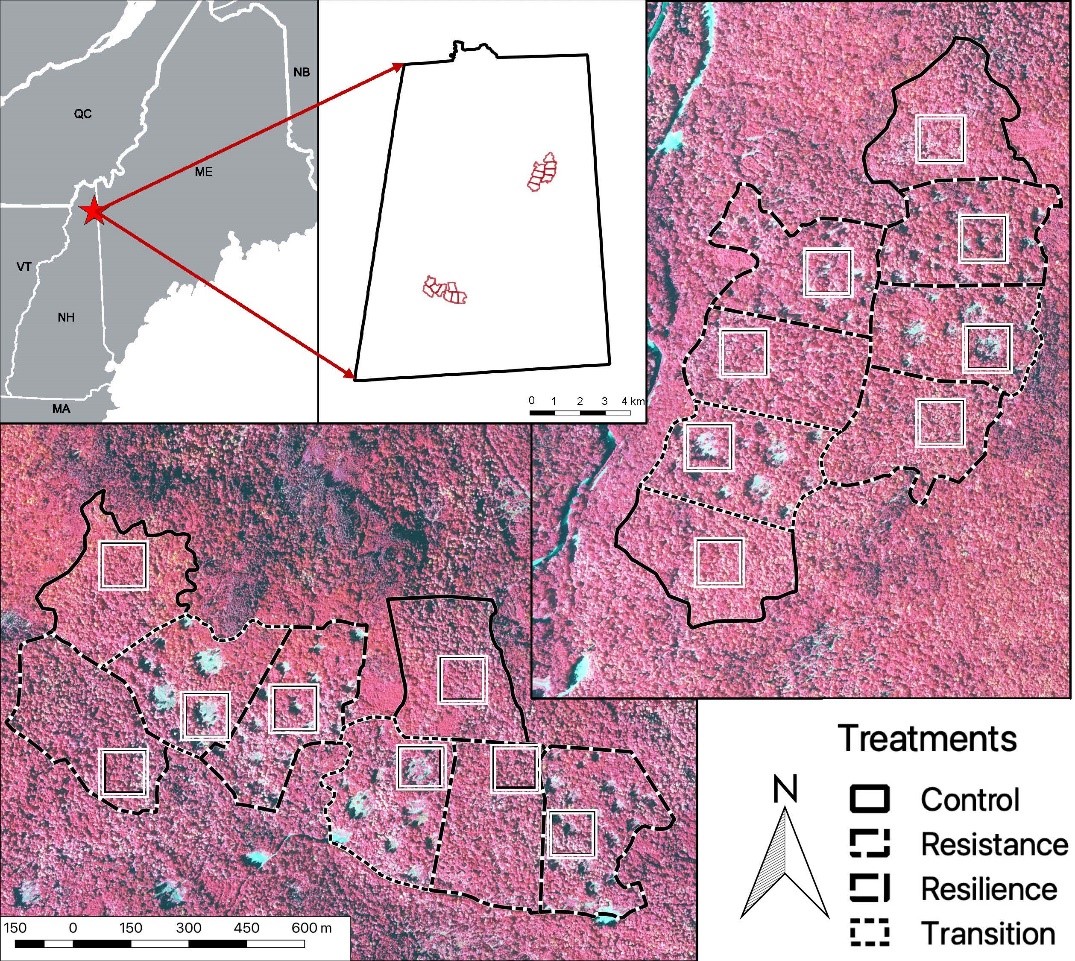Check out this recent paper published by our partners at the University of Vermont. Authors Jessica Wikle and Tony D’Amato examine tree spatial patterns at the Second College Grant ASCC site under no action, resistance, resilience, and transition climate adaptation management approaches.
Spatial arrangement of trees drive adaptive capacity by influencing arrangement of growing space, neighborhood competitive relationships, and disturbance response, with irregular patterns supporting higher adaptive capacity by offering more pathways for disturbance recovery. The authors found distinct spatial arrangements produced by each management approach at the site. In particular, the treatments focused on future adaptation approaches (resilience and transition treatments) led to patterns with variable tree spacing and clumping, while those focused on perpetuating current conditions (no action and resistance) resulted in less pattern variation. The results of this paper indicate that adaptation strategies that include uneven-aged regeneration methods that restore and maintain tree spatial patterns historically generated by gap dynamics can be successful in altering resource availability patterns and adaptation space in northern hardwood-dominated ecosystems.
Learn more and read the full paper here.

Jessica L. Wikle and Anthony W. D'Amato. 2023. Stand spatial structure outcomes of forest adaptation treatments in northern hardwood forests in North America. Canadian Journal of Forest Research. e-First https://doi.org/10.1139/cjfr-2022-0274.

